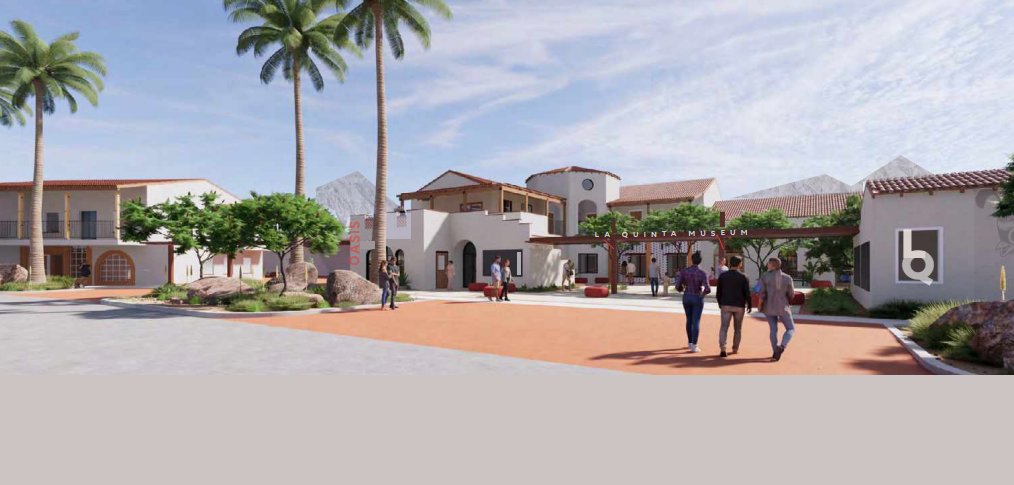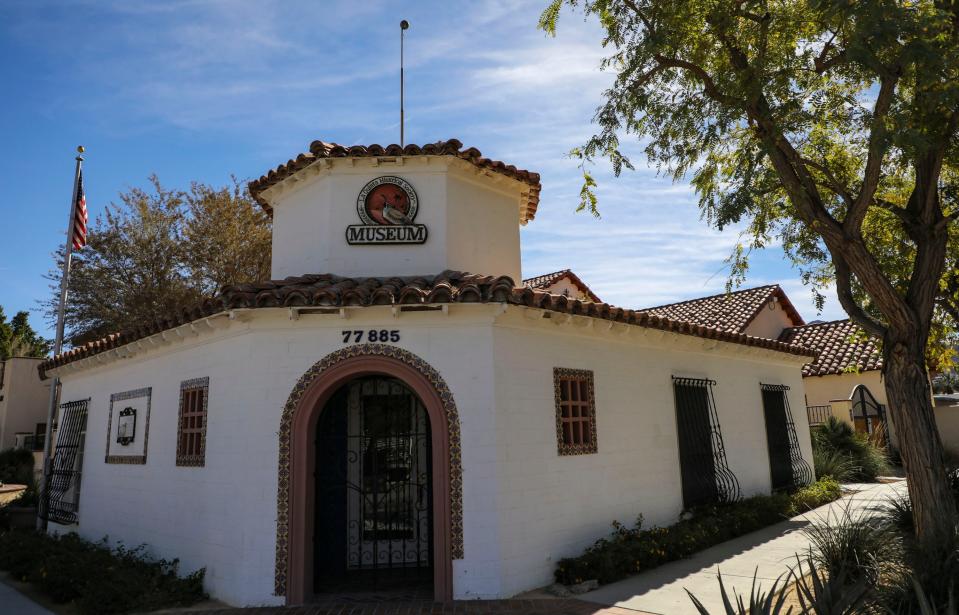Area around La Quinta Museum may become a $7 million ‘cultural campus’ for arts and events

Major upgrades to the La Quinta Museum — including a welcome promenade, a pair of courtyards and a new archive building — are in the works, as local officials aim to boost the area's history and establish a "cultural campus" for the city.
The city council unanimously approved a master plan from national design firm Hammel, Green and Abrahamson for La Quinta’s cultural campus Tuesday. While a few components of the project will have to return to the council, the vote sets in motion the museum's future.
The cultural campus envisioned by the city would establish an anchor for the local arts scene with enhanced outdoor exhibits and gathering spaces, according to a presentation to the council. The project will also reposition the museum’s entry points to make them more accessible to foot traffic through the promenade.
The La Quinta Museum first opened to the public in 2007, with its historic casita — built in 1935 — acting as a meeting space for the La Quinta Historical Society and museum staff.

But the city's plans for the surrounding space have expanded since then. In 2018, the city bought the neighboring property, known as the lumberyard, and it also owns an open lot next to the lumberyard that could eventually be converted into a cultural garden or park.
The master plan approved by the council Tuesday comes with an initial price tag of $3.31 million. That money was already allocated in the city’s capital improvement programs from fiscal years 2019-20 and 2020-21, according to a city staff report.
Other components of the project, such as any renovations to the lumberyard building and interior designs for the new archive building, will require additional approval from the council. The total project, including those items to be decided down the road, is expected to cost $7.86 million.
Lumberyard fate still up in the air
While the council’s approval Tuesday advances the project into a detailed design phase, city officials have not yet decided the fate of the adjacent lumberyard.
The lumberyard, which served as a construction office for some of the area’s first developments in the 1930s, isn’t up to certain ADA standards, so the firm that drew up the master plan recommended only using the building’s first floor as a space for events.
The master plan also leaves open the possibility of demolishing the building, saying that might allow for better use of the overall site. The plan also mentions other options, such as renovating the lumberyard’s ground level to include restrooms, a catering kitchen or an event prep room.
The demolition option — while not up for a vote Tuesday — drew some discussion from the council and residents.
Councilmember John Peña seemed open to using the space for something else, raising the possibility of an exhibition that honors the lumberyard’s history if it were demolished. Councilmember Kathleen Fitzpatrick said she wanted to keep the area’s history in context for visitors.
“I’m not necessarily married to keeping the building, but I am very concerned about maintaining the context of that story, that casita, and how the lumberyard was part of that whole development,” Fitzpatrick said.
But the idea of demolishing the lumberyard drew some pushback from a few residents. Linda Williams, president of the La Quinta Historical Society, largely supported the plan, but she worried about getting rid of the lumberyard.
“Do we want to be a city where the only reflection of our history is some sign that says, ‘This was here’?” Williams said. “It’s great to have museum exhibits ... But I just want to make a plea for preserving something.”
Williams noted the city already lost its famed Desert Club, a popular hangout spot for locals and celebrities in La Quinta’s early days, and she cautioned against losing another piece of history. (Built in the 1930s, the Desert Club fell into disrepair in its later days, before it was allowed to burn in 1989 for firefighting practice. Its previous location is where Fritz Burns Park now stands.)
While the lumberyard’s fate will be decided later on, council members were largely excited by the plans for the space, located just down the road from Old Town La Quinta and the city’s Civic Center.
“I love the promenade component,” Mayor Linda Evans said. “That’s just going to change the dynamic if we do nothing else, with a front entryway that’ll do something... I feel like we need to approve the master plan and get going on that next phase.”
City officials did not offer a timeline for when the initial renovations, such as the promenade and the oasis courtyard, will be completed.
Tom Coulter covers the cities of Palm Desert, La Quinta, Rancho Mirage and Indian Wells. Reach him at thomas.coulter@desertsun.com.
This article originally appeared on Palm Springs Desert Sun: La Quinta Museum may become a $7M ‘cultural campus’ for arts, events

